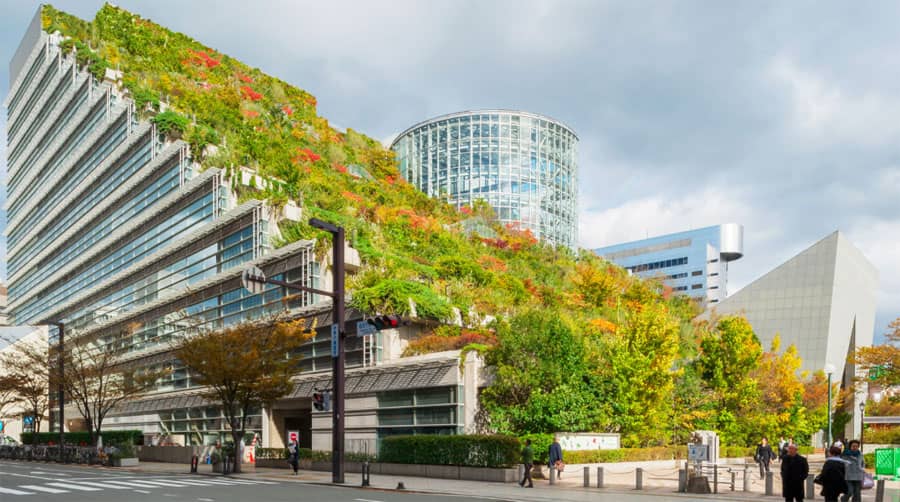Green Buildings - The Future of Construction

Introduction
Planning, designing and construction of structures have matured a lot in a few short years. New standards, new language, new technologies are replacing the traditional fast. The term "green building" is often heard in the offices and fields these days. It's okay for some, but for most, many questions arise. What is it all about? Why should I follow this?
Sustainability is all about things that endure. Buildings that last, power sources that renew, societies that endure, governments that you can depend upon throughout ages. Green building is the constructor's way to make sustainability come into reality.
Another promise of sustainability is to be able to face environmental hazards. There is something bold and wholesome about not running away from the problem and facing raw nature. Sustainable construction, through green building, can give you that. And the safety, too.
Pollution is a major issue these days, no one can disagree. It is slowly poisoning our health, and pushing the planet's health towards inhabitability. Only in the past year, the number and nature of natural disasters will give you some idea where things are going. Green buildings are absolutely necessary in this context.
With low waste, low emission construction techniques, we builders can do our part to keep stop climate change. Moreover, these buildings and their internal working will release less heat and greenhouse gases into the atmosphere. That means a few more years for us before everything collapses.
Green building is not just adding some new green features to the existing building plan. We need to change our whole mindset about how we design a building. Nowadays, increasing energy efficiency has taken priority over pure aesthetics, luxury, prestige or lavish comfort.
Now, we need to think how can we build a house so it can be heated or cooled the most easily? How can we turn on just one little lightbulb and brighten up the whole room? What material should we use to prevent heat from going through the walls? Can we design a building in a way that it provides for itself, up to some level?
Fortunately, you don't need to sacrifice beauty completely in favor of sustainable construction. Green building designs will challenge what is conventionally thought as aesthetics, but creativity knows no bounds. In fact, new opportunities are arising in green building designs for creative architects.
There are multiple green building standards, but we have far to go to precisely define what is a perfect green building. This is the reason there are so many certification issues. Some buildings that are actually high energy users have been certified as green, while some that use next-to-no energy have not been certified at all. Add to that the confusion about if green buildings stay green over time or not. More compelling is the question: what is a "greener" building?

Goals of Green Building
The planning and designing of a green building should be geared towards some specific targets. The more a finished building has achieved these targets, the greener it is. Most of the modern architects and environmentalists agree to the following as the goals of a modern green building.
- Conservation of energy
- Reduction of GHG emission
- Carbon sequestration through biological process
- Minimizing environmental impact for raw materials
- Improved indoors air, water, thermal and noise quality
- Reduce energy costs for household running
- Reduce loss or accumulation of heat as needed
- Improve visual appeal and marketing
- Avoid nonrenewable sources of energy
- Reduce load on existing energy grid
- Reducing dependency of foreign products
- Follow fair labor practices
- Protect consumers
- Protect parklands, historic structures, natural formations etc.
- Provide affordability to the widest demographic
- Being self-reliant
- Promoting love for all thing natural
- Satisfy the need for beauty
- Reduce construction costs
Some of these goals can be environmental, some engineering, some political and some are social. Regardless of how they are categorized, All of them are important. However, they need to be prioritized and rational conversations need to be held about this.
A new metric is emerging as we shift into the green building era: performance. A building is no longer just a dead place to stay or work in - it is increasingly becoming comparable to a living organism. Multiple systems, abilities, even changing behaviors of what we so far presumed as static components, a green building is a complex system that changes over time, environment, or even the clock.
With that, comes the question of how well this organism performs. A building must now work efficiently, persistently providing comfort and healthy conditions to its occupants, as well as eat up the least resources in the process, and react to environmental effects.
Conclusion
In conclusion, we must point out that with new toys come new risks. It is easy to run towards something just because it's 'hip' or trendy. But there are many potential pitfalls in Green Building initiatives that a constructor must not overlook. The challenge is to use common sense to build efficient structures.
For more information, Please watch the video
